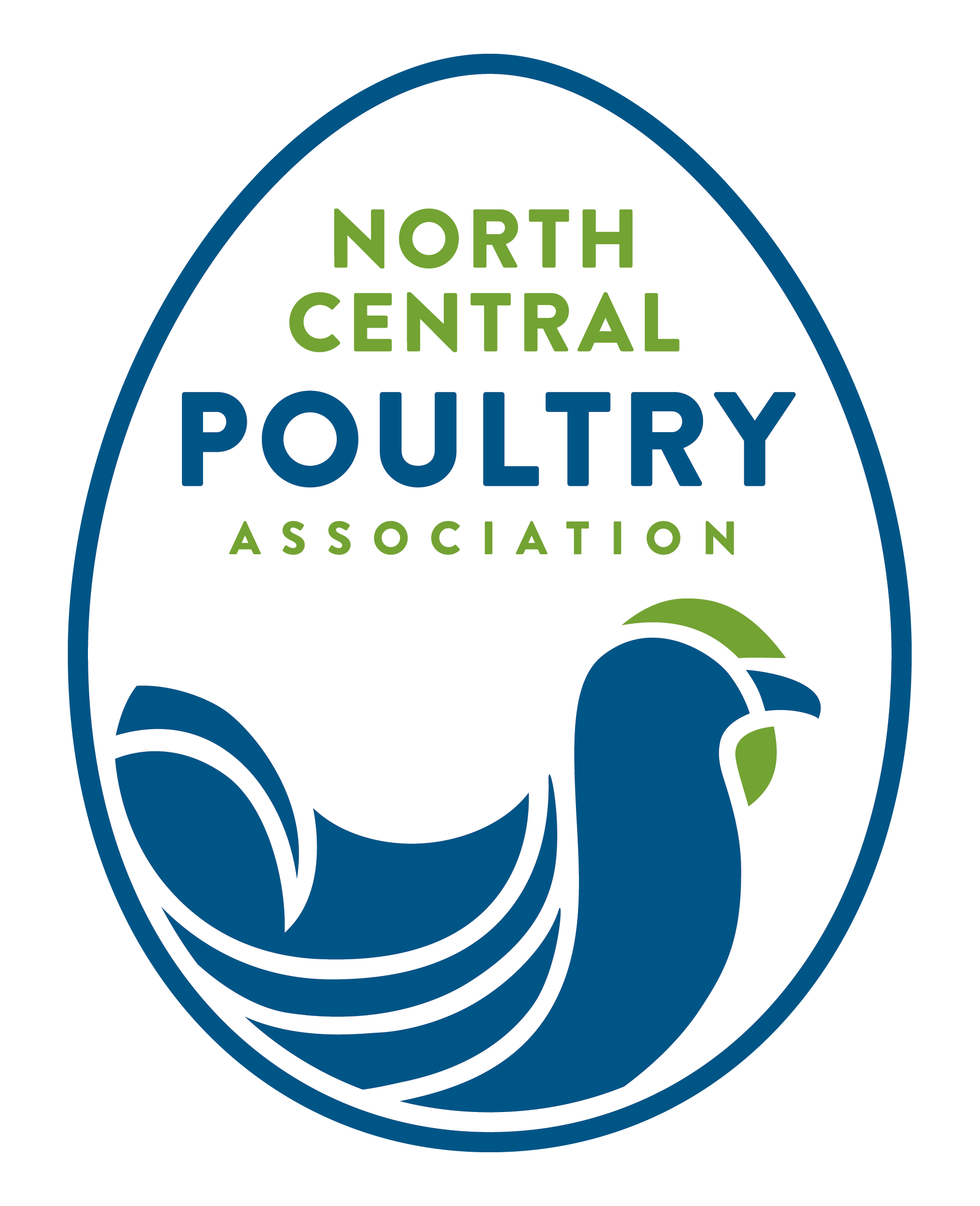HPAI Toolkit
This comprehensive toolkit was put together in collaboration with the Iowa Department of Agriculture and Land Stewardship, the Iowa State Veterinary Diagnostic Lab, Minnesota Board of Animal Health, and North Central Poultry Association's Veterinary Advisory Committee. We hope through this collection of resources and guidance you will be prepared to prevent, detect, and mitigate Avian Influenza.
See printable version of key points here.
Prevention
Biosecurity is your best line of defense against foreign animal disease. In the presence of a foreign animal disease threat, awareness and biosecurity practices should be heightened. Premises should be secured. All vehicle and foot traffic of visitors should be kept to a minimum and logged. Vehicles entering the premises should be cleaned and disinfected. All contractors, personnel, guests, and outside visitors should be aware of necessary downtimes and biosecurity procedures.
Find more information here:
APHIS Defend the Flock
Secure Poultry Supply Plan
Secure Egg Supply Plan
NPIP 14 Biosecurity Points
NPIP Biosecurity Audit Form
Biosecurity Plan Consultation Offer
IDALS Biosecurity Resource Page
IDALS Biosecurity Webinar
Biosecurity Checklist for Combatting Avian Influenza
Biosecurity Measures to Fight Avian Influenza Threats
Backyard Biosecurity for Poultry
Avian Influenza Basics for Urban and Backyard Poultry Owners
Avian Influenza and Biosecurity Podcast
Biosecurity Acknowledgement Form Template
Minnesota Board of Animal Health NPIP Biosecurity Auditing materials: NPIP Biosecurity Principles
Detection and Preparedness
1) Being vigilant of clinical signs in and around your flock will help you to quickly catch and report any foreign animal disease.
In the event you suspect HPAI you must contact your state veterinarian or USDA before taking any further action.
If you're in Iowa call one of these numbers to report your suspected sick birds
8am-4pm
- IDALS Reporting Line 515-281-5305
- USDA Reporting Line 515-284-4140
After Hours
- Dr. Jeff Kaisand 515-240-6632
- Dr. Kevin Petersburg 515-669-6043
Call this number if you find wild bird mortality near your flock
- USDA Wildlife Services 866-487-3297
For Minnesota, call one of these numbers to report your suspected sick birds:
- Avian Influenza Hotline: 833-454-0153
- Online sick bird reporting form
- Reportable Animal Diseases (24/7): 800-422-0798
- MPTL: 320-231-5170
Find more information here:
Increased Surveillance Recommendations
Chickens and Slow Moving Virus
USDA Clinical Signs in Poultry (1)
USDA Clinical Signs in Poultry (2)
University of Minnesota Clinical Signs in Layers
HPAI in Poultry: What to Expect if You Suspect
Avian Influenza 2022: Frequently Asked Questions
Minnesota HPAI
U of M HPAI
2) Prepare potentially necessary documentation such as visitor logs, vehicle movement logs, traffic pattern maps, and bird movement logs. Ensure they are accurate and up-to-date. An electronic version may be helpful to quickly communicate information to USDA and IDALS.
Find more information here:
IDALS Trace-in Trace-out Priority Ranking
3) Have sampling supplies on hand. If you are comfortable taking samples, collecting your own may expedite the diagnostic process at the direction of the state veterinarian and/or AVIC. In Minnesota, samples must be collected by an Authorized Poultry Testing Agent. These supplies can also be used for routine monitoring even if your birds are not showing clinical signs.
Sampling Supplies can be sourced by:
- Contacting North Central Poultry Association. We maintain a stock of supplies that can be mailed to both commercial and non-commercial flocks. Keep in mind these supplies may become limited and we may restrict the number of kits we send to individuals and companies.
- Minnesota producers can obtain testing supplies through their Minnesota processor or by calling the MPTL 320-231-5170.
- Swabs can be purchased through:
- BHI Broth can be purchased through:
- Other supply needs are listed in this testing document
4) If you are not authorized to sample for AI, or are not comfortable collecting your own samples, your state Veterinarian's office (IDALS or MNBAH) will respond with testers and testing supplies if you suspect disease. In Iowa, you may also call one of these district vets who have been trained by the ISU VDL for routine sampling and monitoring.
Collecting HPAI Samples Minnesota
Submitting Samples ISU College of Vet Med
Mitigation
1) If you have sick birds and suspect HPAI you must first contact the state veterinarian or USDA before taking any further action.
In Iowa, call one of these numbers to report suspected sick birds
8am-4pm
- IDALS Reporting Line 515-281-5305
- USDA Reporting Line 515-284-4140
After Hours
- Dr. Jeff Kaisand 515-240-6632
- Dr. Kevin Petersburg 515-669-6043
Call this number if you find wild bird mortality near your flock
- USDA Wildlife Services 866-487-3297
In Minnesota, call one of these numbers to report your suspected sick birds:
- MinnesotaAvian Influenza Hotline: 833-454-0153
- Online sick bird reporting form: https://www.bah.state.mn.us/report-sick-birds/
- Reportable Animal Diseases (24/7): 800-422-0798
- Minnesota Poultry Testing Laboratory: 320-231-5170
Find more information here:
IDALS Premises Preparedness
Key points:
- Clinical Signs
- Quarantine
- Epidemiological Assessment,
- Indemnity
- Depopulation
- Disposal
Iowa HPAI Response Plan
Key Points:
- Appendix 3, Mitigation
USDA Response Plan
Key points
- Chapter 2.2 Federal Roles, Responsibilities, and Planning Assumptions
- Chapter 4.2.4 Timeline of any HPAI Response for First 72 Hours
- Chapter 5.1 Quarantine and Movement Controls
- Chapter 5.13 Mass Depopulation and Euthanasia
- Chapter 5.14 Disposal
- Chapter 5.21 Appraisal and Compensation
IDALS AI Website
Minnesota BAH AI
Minnesota BAH HPAI Response
FAD Control Areas, Secure Poultry Supply, and Permitting Webinar
Composting Mortality in an Avian Disease Outbreak
Iowa DNR Livestock Burial
General Guidelines for Composting AI-Infected Carcasses
USDA Forms
2) Should your farm experience clinical signs compatible with HPAI and/or test positive for HPAI you will be directed by a State Animal Health Official to quarantine and for next steps.
Find more information here:
HPAI Infected Premises: Release of Compost
Egg Industry Center
Field Reimbursement Guidance--Video
Solutions for Your Poultry Facility
IDALS Biosecurity
Setting Up a Temporary Cleaning and Disinfection (C&D) Station
Temporary Cleaning and Disinfection (C&D) Supply List
Video: How to Set up a Cleaning and Disinfection Corridor
